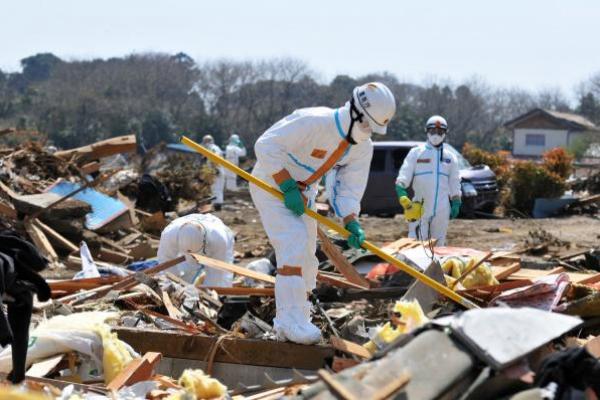
“Natural and Unnatural Disasters: 3/11, 9/11, Asbestos, and the Unmaking of Japan’s Modern World”
Flyer: ![]() Brad Richardson Memorial Lecture Flyer (March 4, 2016).pdf
Brad Richardson Memorial Lecture Flyer (March 4, 2016).pdf
Abstract: At 2:46 p.m. on March 11, 2011, a massive earthquake devastated northeastern Japan and caused one of Earth’s most dangerous nuclear catastrophes. The quake was 9.0 on the Richter scale and it unleashed a tsunami that swept away entire communities. Along with an enduring nuclear legacy, it also left an estimated 25 millions tons of rubble, much of it contaminated with asbestos and other carcinogenic toxins. Indeed, when the tides of the devastating tsunami ebbed, the unnatural disaster of cleaning up Japan’s pulverized and aerosolized built environment remained. Now, every time a backhoe or shovel digs into this rubble, asbestos fibers are released into the environment to threaten human health.
Japan’s history of asbestos use contrasts with many other industrialized nations, including the United States. Although the United States E.P.A. began phasing out asbestos in the 1970s and banned most of its use in the 1980s, as did the United Kingdom in 1985, Japan continued to use chrysotile asbestos until 2004. Asbestos was a critical fiber in the construction of Japan’s modern built environment because of the culturally engrained fear of fire. In the postwar period, asbestos offered a powerful solution to fires in sprawling built environments, until it became closely connected to pulmonary diseases, including lung cancers. This paper investigates asbestos in the construction and, more importantly, destruction of Japan’s built environment, with a comparison of the destruction and debris cause by the 9.11 terrorist attacks (2001) against the World Trade Center and the 3.11 triple disaster (2011) in northeastern Japan.
Just as World Trade Center dust has caused widespread and deadly health challenges for New York’s first responders, the dust caused by Japan’s 3.11 triple disaster contains many of the same toxic ingredients, including asbestos.
Bio: Brett L. Walker is Regents Professor and Michael P. Malone Professor of History at Montana State University, Bozeman. His research expertise is on early modern and modern Japan as well as comparative world history. His research and teaching repertoire includes environmental history and the history of science and medicine. He has widely published and gave numerous lectures and seminars on these subjects at conferences and universities worldwide. Professor Walker has authored six books, two of which are translated into Japanese and one into Chinese. His 2010 monograph, Toxic Archipelago: A History of Industrial Disease in Japan was awarded George Perkins Marsh Prize for Best Books in Environmental History by the American Society for Environmental History. His recent publication is A Concise History of Japan (Cambridge University Press, 2015) which is being translated into Portuguese, Spanish, and Chinese. He has three monographs in progress including one on the environment and disasters in modern Japan in the context of a comparative history. He has been awarded many research grants from funding agencies that include the U.S. National Science Foundation, the U.S. Department of Education Title VI, and Japan Foundation. For the academic year 2015-2016, Professor Walker is Edwin O. Reischauer Visiting Professor at Harvard University where he is teaching a seminar course on the theme of science, medicine and environment in Japan.
